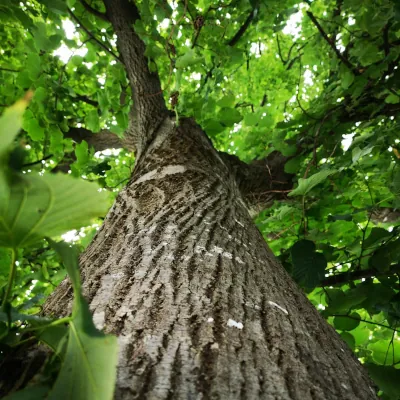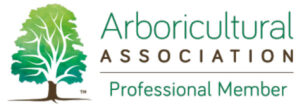Tree Services
Ace Of Spades Consultancy
We offer a full tree consultancy service for the management and maintenance of trees, and ensure that you get qualified advice on all tree related issues. We do this with the aim to create certainty and reduce risk. This leads to fewer complaints, reduced spending, and avoids unnecessary work.
For more information about our consultancy services call 01603 487 447 or email [email protected].
Tree Surveys for Safety and Development
As a landowner, you are legally required to manage and maintain any trees on your land, in order to protect people and property from harm.
There is no denying that trees play a vital role in sustainable living, but they can also present a safety risk if they are not properly managed and maintained. Depending on the species, a tree can outgrow the space in which it has been planted. It can encroach on surrounding structures, causing instability and raising the risk of subsidence, and can also suffer from broken branches and falls, all as part of its natural lifecycle. Storm damage, disease and poor structure are problems that can create further risks.
A tree survey records important information about trees so that any risks can be identified, managed and appropriate restorative action taken, both now and in the future.
what is a tree survey?
A tree survey is a detailed examination of trees within a specific area. It gathers information about each tree’s health, size, and condition to help make informed decisions about their management and care.
Whether you’re planning a new construction project, managing a property, or simply aiming to maintain the health of your trees, a tree survey provides the crucial data you need. This process helps preserve the natural beauty of your landscape and ensures safety by identifying any potential risks posed by unhealthy or unstable trees.
the importance of tree surveys
Tree surveys are vital for more than just checking the health of trees. They are essential for urban planning and development projects, helping to ensure that new construction coexists in harmony with the surrounding natural environment.
By identifying which trees are healthy, which need care, and which might pose dangers during storms or other events, these surveys help prevent potential property damage and maintain public safety.
Furthermore, they support biodiversity and promote healthier ecosystems, making them indispensable tools for sustainable environmental management.
Whether you’re a property developer, a local authority, or a homeowner, understanding the makeup of your arboreal landscape is critical to making informed decisions that benefit both people and nature.
Legal Requirements and Tree Preservation Orders
Navigating the legal landscape of tree management can be tricky, but it’s crucial for ensuring the health and safety of your environment. Legal requirements for tree surveys often come into play during property development or before significant landscaping changes to ensure no harm to protected trees. Tree Preservation Orders (TPOs) are vital here—they protect specific trees, groups of trees, or woodlands for public benefit. If your tree is subject to a TPO, you’ll need official consent for any work that might affect it. Knowing the relevant regulations is key to avoiding legal issues and helping to protect the local environment.
Types of Tree Surveys
BS5837 Tree Survey
The BS5837 Tree Survey and Report is a crucial document that assesses trees’ health, condition, and value on a development site. This British Standard provides a comprehensive framework for evaluating trees and ensuring their protection during construction projects.
What is a BS5837 Tree Survey?
A BS5837 Tree Survey is a detailed assessment of the trees on a site conducted by a qualified arborist. The survey gathers information about each tree’s species, size, age, and overall condition, as well as its potential for retention and any potential conflicts with the proposed development.

Why is a BS5837 Tree Report Important?
The BS5837 Tree Report is essential for several reasons:
- Planning and Design: The report helps developers and planners understand the site’s existing tree cover and incorporate it into the design, minimising the impact on valuable trees.
- Tree Protection: The report identifies trees that should be retained and outlines measures to protect them during construction, such as establishing root protection zones and implementing tree-friendly construction techniques.
- Legal Compliance: Many local authorities require a BS5837 Tree Survey and Report as part of the planning application process, ensuring the development complies with relevant tree preservation orders and environmental regulations.
- Sustainability: Preserving mature trees on a development site can provide environmental benefits such as carbon sequestration, air purification, and habitat for wildlife.
Key Elements of a BS5837 Tree Report
A comprehensive BS5837 Tree Report typically includes the following elements:
- Tree Survey: A detailed inventory of all trees on the site, including species, size, condition, and potential for retention.
- Tree Constraints Plan: A visual representation of the site, showing the location and extent of the trees, as well as their root protection areas.
- Arboricultural Impact Assessment: An analysis of the potential impact of the proposed development on the existing trees, including any necessary removals or pruning.
- Arboricultural Method Statement: A detailed plan outlining the measures to protect the retained trees during construction, such as fencing, ground protection, and specialist construction techniques.
Tree Constraints Plan
A Tree Constraints Plan is a document that outlines the specific requirements and guidelines for protecting trees during construction or development projects. It helps ensure that valuable trees on a property are preserved and protected from potential damage.

Key Elements of a Tree Constraints Plan
- Tree Inventory: A detailed list of all the trees on the site, including their species, size, condition, and location.
- Tree Protection Zones: Designated areas around each tree where no construction activity or soil disturbance is allowed to prevent damage to the tree’s roots and trunk.
- Tree Protection Measures: Specific actions and physical barriers (such as fencing or mulch) will be implemented to safeguard the trees during the project.
- Tree Pruning and Maintenance: Recommendations for any necessary tree pruning or other maintenance to ensure the trees remain healthy and stable.
- Monitoring and Enforcement: Procedures for regularly inspecting the site to ensure the tree protection measures and consequences for non-compliance are followed.
Benefits of a Tree Constraints Plan
- Preserves the aesthetic and environmental value of mature trees on the property.
- It helps prevent costly tree damage or removal during construction.
- It demonstrates the project’s commitment to sustainable development and environmental stewardship.
- Local authorities can require it as part of the development approval process.
Arboricultural Impact Assessment (AIA)
Regarding construction projects or land development, it’s crucial to consider the impact on existing trees. An Arboricultural Impact Assessment (AIA) is a comprehensive evaluation that examines the potential effects of a proposed development on the surrounding trees. This assessment provides valuable insights, helping to identify any trees that may be affected, either directly or indirectly, by the planned activities.
The AIA typically includes the following key elements:
- Detailed survey of all trees within the site, including their species, size, condition, and potential for retention.
- Identify trees that need to be removed or pruned to accommodate the development.
- Assess the impact on the remaining trees, considering factors such as changes in soil levels, proximity of construction, and potential damage to root systems.
- Recommend actions for the protection and management of trees during the construction phase.

Arboricultural Method Statement (AMS)
Once the AIA has been completed, an Arboricultural Method Statement (AMS) is developed. The AMS outlines the specific measures that will be taken to protect the trees during the construction process. This document includes:
- The tree survey report should include detailed instructions on installing protective fencing and other physical barriers to safeguard the trees during construction or development.
- Guidance on the appropriate techniques for any necessary tree pruning or removal. This should be obtained from a qualified arborist or tree care expert to ensure the work is carried out safely and in compliance with local regulations.
- Effective tree monitoring during construction involves regular inspections, protective measures, arborist consultations, documentation, and prompt interventions to maintain the health and condition of on-site trees.






